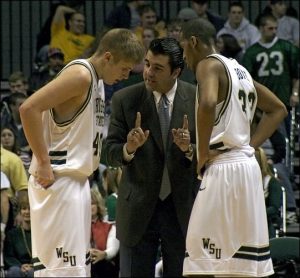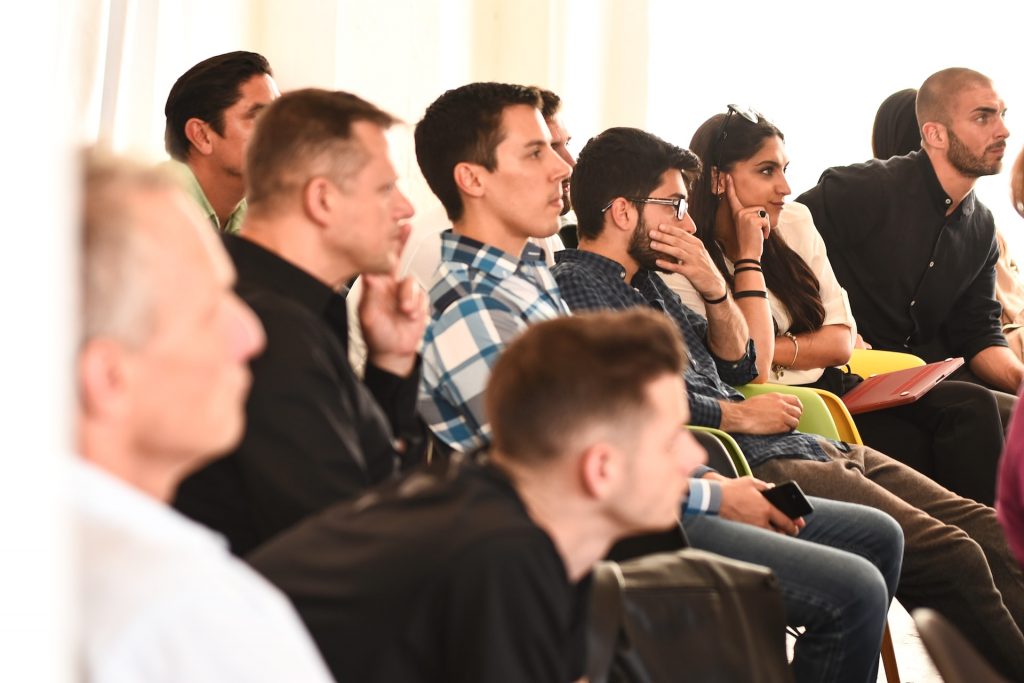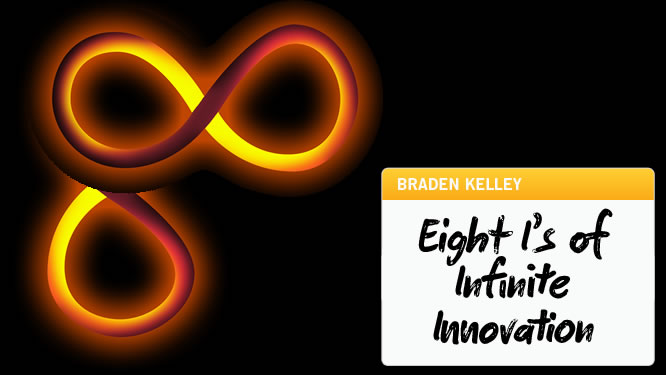 Innovation is not a solo activity. While the rare lone genius may be able to invent something on their own (although still always inspired by others), nobody can innovate by themselves. Innovation, by its very nature, requires collaboration.
Innovation is not a solo activity. While the rare lone genius may be able to invent something on their own (although still always inspired by others), nobody can innovate by themselves. Innovation, by its very nature, requires collaboration.
Companies are like brains. The brain is composed of two hemispheres. The left brain is typically described as the home to math and logic skills, while the right brain is described as the domain of creativity. Of course people need to develop both hemispheres to be successful, and companies are the same. Achieving operational excellence is the goal of the left brain side of the organization and innovation excellence should be the goal of the right side of the organization. Unfortunately, most organizations over-invest in operational excellence to the point that the organization fights off innovation excellence efforts like a virus.
So, what’s the cure?
Not to get sick in the first place of course!
To achieve that, consider putting an innovation wellness program in place. And what does that look like?
An innovation wellness program has at its center, an organization that is willing to reach outside its four walls for a constant stream of new inspiration. Because it is inspiration in combination with curiosity that will give the organization a fighting chance of identifying ongoing sources of unique and differentiated insights that will allow the organization to continuously reinvent itself and stay in resonance with its customers.
A couple tangible examples of innovation wellness program components include:
- Embedding elements of so-called Open Innovation into the core of the organization’s innovation approach rather than existing as a periodic guest
- Continuous reinforcement of a curiosity culture
- Employment of a part-time innovation coach on an ongoing basis
 What does an innovation coach look like?
What does an innovation coach look like?
Well, one good example was the late Robert F. Brands, who was lost to the global innovation community far too soon. He was a friend, a colleague, a mentor, a partner on work we did for the United States Navy, and he helped me get the book deal for my first five-star book – Stoking Your Innovation Bonfire.
A good innovation coach helps you avoid the ten signs of innovation sickness:
- Nobody can articulate your definition of innovation (or you don’t have one)
- Nobody can articulate your innovation vision/strategy/goals (or you don’t have them)
- People struggle to tell the story of one or more innovations launched to wide adoption by the organization
- Most of what passes as innovation inside the organization would actually be classified as improvements (not innovation) by people outside the organization
- The organization no longer makes external innovation perspectives available to a wide audience
- Nobody takes the time to participate in our innovation efforts anymore
- Your organization is unable to accept insights and ideas from outside the organization and develop them into concepts that can be scaled to wide adoption
- Innovation program leadership has difficulty getting time on the CEO’s calendar any more
- Your innovation team is trying to do all of the innovating instead of helping to accelerate the innovation efforts of others
- Your pace of innovation is slower than the organizations you compete with for market share, donations, votes, etc.
A good innovation coach can help you:
1. Perform an innovation assessment
I developed a 50 question innovation audit and made it available in support of my first book Stoking Your Innovation Bonfire, so that people can do a self-evaluation of their innovation maturity here on my web site. Or if you would like to dig a little deeper into the dynamics of innovation in your organization, I can work with you to do an innovation diagnostic across your organization and/or help you establish a baseline so you can track your innovation maturity progress over time.
2. Establish a Continuous Innovation Infrastructure
Many companies confuse having a New Product Development (NPD) program or a Research & Development (R&D) program with having an innovation program, or are stuck in an ‘innovation as a project’ approach to innovation. A good innovation coach can help you define what innovation can and should mean to your organization, build a common language of innovation, create an innovation vision, establish an innovation strategy that dovetails with your organization’s overall strategy, and develop innovation goals that will help focus the organization’s efforts to realize its innovation vision and strategy.
3. Teach You Some New Innovation Tools, Methods, and Frameworks
A good innovation coach is also a skilled facilitator and can help facilitate innovation off-sites, an effective trainer who can develop the custom courses you need to teach people in the organization new tools, methods, or frameworks to improve or accelerate your innovation capabilities, and is capable of delivering inspirational keynotes to large groups inside your organization to help shift mindsets and help people feel empowered to participate in the innovation efforts of the organization. The best innovation coaches are capable not just of bringing in the tools, methods and frameworks of others, but are also capable of understanding your innovation gaps and creating new innovation tools, methods and frameworks to help you.
4. Help You Identify Insights and Opportunities
Innovation begins with inspiration, and your curiosity and exploration should lead you to identify some good insights to build on and opportunities to pursue. But, because most ideas are really idea fragments, sometimes an innovation coach or other external perspectives can help you identify the gaps in your idea fragment or opportunity identification that might make them more compelling, especially if you aren’t making a conscious use of The Nine Innovation Roles as part of your innovation process to help you avoid innovation blind spots. A good innovation coach can also help you go beyond ideas and help you focus on not just one, but all three keys to innovation success:
- Value Creation
- Value Access
- Value Translation
Stoking Your Innovation Bonfire will help you learn more about each, or you can check out my previous article ‘Innovation is All About Value‘.
5. Tell You Honestly When You’re Going Off Course
A good innovation coach will have the courage to be honest with you and tell you when you’ve lost your way. Over time, many innovation teams tend to come down with shiny object syndrome or its equally evil cousin, launch fever. A competent innovation coach will be able to recognize the change and help you course correct before you pass the point of no return, and put the very existence of your innovation program at risk. A good innovation coach is able to provide a consistent external perspective, a sanity check, and may be able to also help you build external connections to invite in other external perspectives as well.
Wrapping it Up
It is easy to fall in love with the innovation process and program you’ve created. It is equally simple to form attachments to your innovation projects and artifacts and think that you’ve cracked the code, and maybe you have, but wouldn’t you like to keep one toe in the pond outside your organization just to make sure?
 Creating and maintaining a part-time relationship with an innovation coach you trust is a great way to do that. Smart organizations keep a pulse on their level of innovation maturity over time. They’re continuously evolving their innovation infrastructure, building new capabilities, and seeking out external perspectives as a sanity check on their program evolutions over time. So what are you waiting for?
Creating and maintaining a part-time relationship with an innovation coach you trust is a great way to do that. Smart organizations keep a pulse on their level of innovation maturity over time. They’re continuously evolving their innovation infrastructure, building new capabilities, and seeking out external perspectives as a sanity check on their program evolutions over time. So what are you waiting for?
Who’s going to coach your winning innovation team?
Contact me now to set up a free introductory consultation

 Sign up here to get Human-Centered Change & Innovation Weekly delivered to your inbox every week.
Sign up here to get Human-Centered Change & Innovation Weekly delivered to your inbox every week.

![]() Sign up here to join 17,000+ leaders getting Human-Centered Change & Innovation Weekly delivered to their inbox every week.
Sign up here to join 17,000+ leaders getting Human-Centered Change & Innovation Weekly delivered to their inbox every week.




 Innovation is not a solo activity. While the rare lone genius may be able to invent something on their own (although still always inspired by others), nobody can innovate by themselves. Innovation, by its very nature, requires collaboration.
Innovation is not a solo activity. While the rare lone genius may be able to invent something on their own (although still always inspired by others), nobody can innovate by themselves. Innovation, by its very nature, requires collaboration. What does an innovation coach look like?
What does an innovation coach look like?



